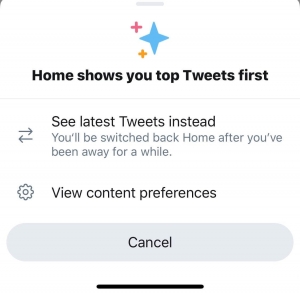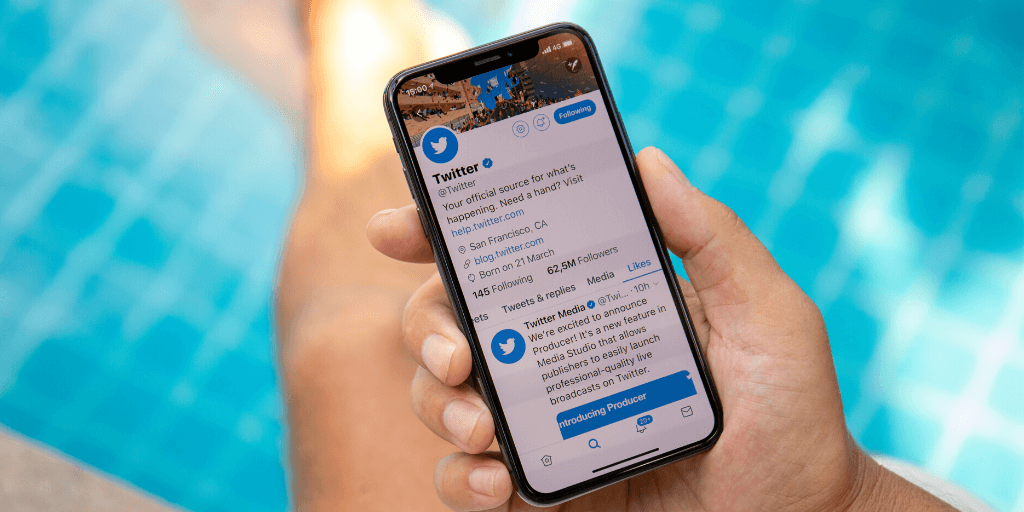The decline of organic reach on social media isn’t limited to Facebook and Instagram. With an increase in users and posted content came the need for some type of algorithm to combat users’ overwhelming homepage feeds. Twitter’s story follows a similar timeline.
A Quick History
Twitter began as a simple, micro-blogging platform in 2006, using a reverse-chronological feed display where the users could see the most recent Tweets from accounts they followed first.
Initially, Twitter grew rapidly and became the third-highest-ranking social networking site by 2009. It’s short, 140-character updates and reverse-chronological feed attracted users, especially during events. For example, a record-setting (at the time) 2,940 Tweet-per-second were sent in the 30-second period after Japan scored against Cameroon during the 2010 FIFA World Cup. That record has since been beaten many times over!
By 2012, Twitter boasted more than 140 million users and 340 million Tweets per day, and in 2014, the platform introduced its first significant timeline tweak, which showed users content from recommended Tweets, topics, and accounts, rather than just from the accounts a user followed.
Twitter’s Algorithm
Twitter’s first foray into majorly restructuring timelines with an algorithm began in 2016 when it began to push the “best Tweets” to the top of user feeds. Tweets were now scored on a relevance model that was designed to predict the content users would find interesting. Though users reacted negatively to the changes, the algorithm actually drove more engagement from users.
Today, you can toggle your feed between the algorithm-based one and the real-time, reverse-chronological feed.

More changes will be made to the algorithm in Twitter’s future, but the option to see updates in it’s original, reverse-chronological order will likely remain.
“A chronological timeline isn’t just a timeline ruled by a clearly defined order; it’s a feed in which information is neutral.” -Aja Romano, Vox Journalist
Twitter Organic Reach
As it has on Facebook and Instagram, Twitter has seen a decline in organic reach over the past few years. The platform has also seemed to plateau in follower growth as well, dropping in popularity over Facebook, Instagram, and newer social media sites.
In this graph, you can see how organic reach for an account dropped 35.7% from 2017 to 2019, while follower growth only clocks in at 10%.

The first step to combating the declining organic reach on Twitter is understanding what the algorithm is looking for, also known as “ranking signals.” According to Hootsuite, here are Twitter’s ranking signals:
- Recency
- How recently the tweet was published.
- Engagement
- How many Retweets, clicks, favorites, and impressions a tweet has received.
- The tweet’s engagement relative to other tweets from the same user.
- How often people engage with the tweet’s author, through active engagements and impressions.
- Rich Media
- The type of media the tweet includes (image, video, GIF) – and even polls.
- The type of media users tend engage with. For example, a user that often engages with video is probably more likely to see more tweets with videos.
- Other factors
- How long a user has been away from the site.
- How many followers an account has.
- The account’s location relative to users.
Once you understand what Twitter is looking for to boost your reach, you can implement these five best practices:
- Stay active on Twitter. The more often you Tweet, the more likely it is that your audience will see and engage with your content.
- Tweet when your audience is active. Check out your Twitter analytics to determine when your audience is online and Tweet during those peak times.
- Use hashtags. Just like on Instagram, hashtags can go a long way to increasing the reach of your content. Unline Instagram, however, you should stick to one or two highly relevant hashtags per Tweet.
- Make the most of rich media. Tweets with photos, videos, and GIFs rank higher in user feeds!
- Engage with your followers. Reply to mentions, like other Tweets, and use Twitter polls to encourage engagement and increase reach.
Don’t Rely on Organic
Of course, it’s important to realize that you cannot rely fully on organic reach anymore. Twitter ads are a great way to get your message in front of your target audience. You can get a full rundown on how to use Twitter ads from Hootsuite. No social media strategy created today is complete without a social ad budget to boost it.

